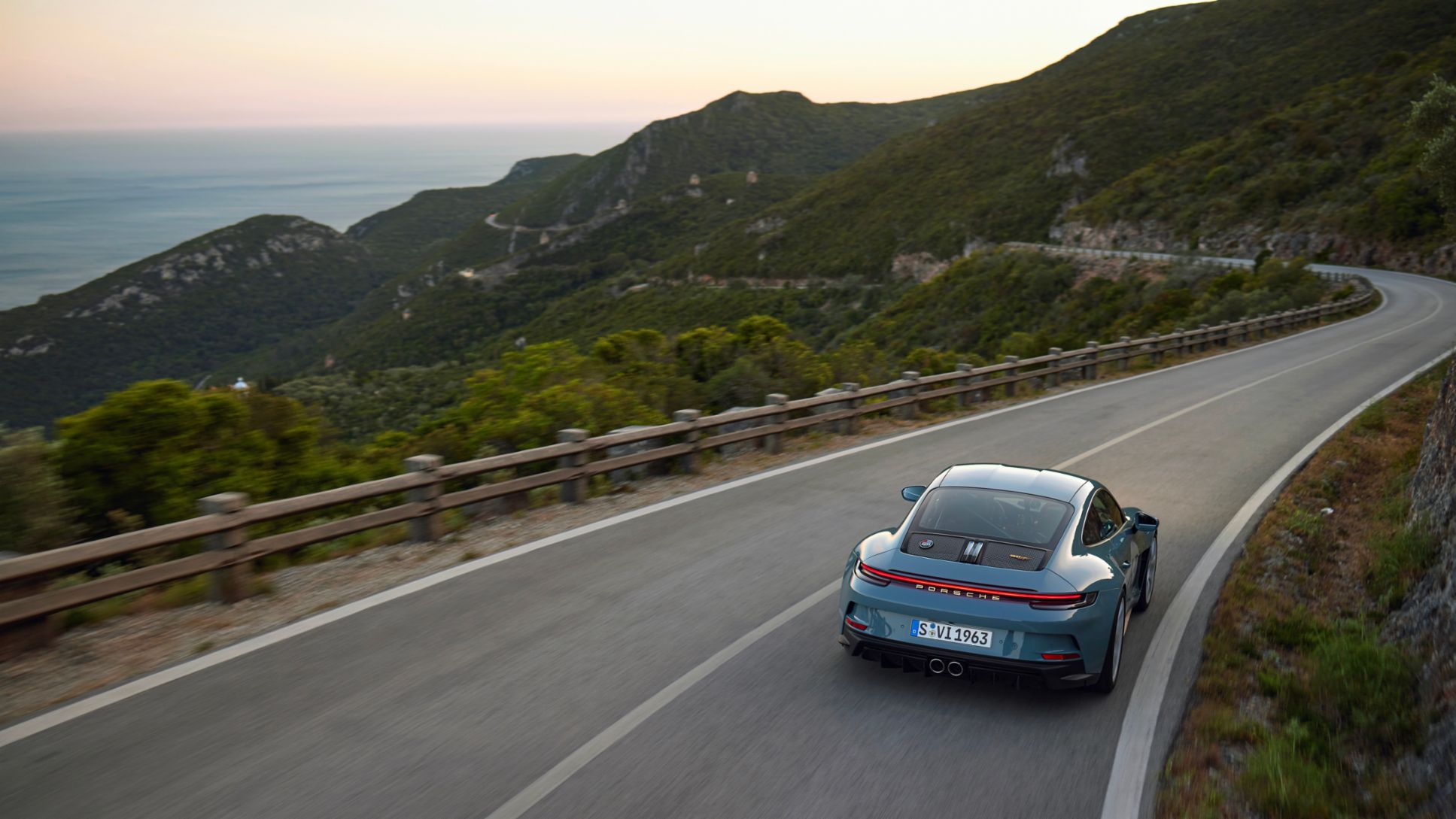The lightest Porsche 911 of the 992 generation
On-road performance might be the focus of the new 911 S/T, but its origins are in motorsport. Like all other GT vehicles from Porsche, it exemplifies the maxim of intelligent lightweight design. The car’s weight has a significant influence on the driving experience: every gram saved does not need to be accelerated, braked or steered. For the Porsche engineers, lightweight design was therefore paramount in the development of the 911 S/T. They achieved a sensationally low total weight for the car of just 1,380 kg (DIN empty).
“With consistent weight reduction, we achieve an enormous gain in dynamism that you notice in every bend,” says Andreas Preuninger, Director of Porsche GT Cars. “The 911 S/T is noticeably the lightest model from the current 911 series.”
In the 911 S/T, particular attention was given to reducing the rotating masses around the crankshaft drive in the boxer engine. This allowed engineers to enhance the responsiveness. They developed a lightweight clutch based on the double-disc principle specifically for the 911 S/T. In combination with the standard single-mass flywheel, the weight of the components positioned directly on the crankshaft was reduced by 10.5 kg. This, in turn, made the powertrain more responsive. Coupled with the six-speed manual transmission, the result is an incomparably active, thrilling driving experience.
For a sports car, the weight of the unsprung masses is also of fundamental importance. A reduction of this mass has a direct and immediately noticeable effect on driving behaviour. Porsche has therefore equipped the 911 S/T with magnesium wheels and carbon ceramic brakes (PCCB) as standard. In addition, the rear anti-roll bar is made of lightweight CFRP rather than steel. Rear-wheel steering has also been dispensed with in the 911 S/T. Overall, weight is significantly reduced in all the areas relevant to vehicle responsiveness. The result is particularly agile and precise handling.
As is common in the racing world, the body of the 911 S/T saves weight through the use of CFRP components. The front wings are made of this lightweight material, as is the front bonnet – which has been adopted from the 911 GT3 Touring. The CFRP doors from the 911 GT3 RS are even lighter than the lightweight aluminium doors on other 911 models. The use of CFRP in structural components further reduces the overall weight of the car. The material is used for the roof roll cage, the anti-roll bar and the shear panel (used in the rear to add stiffness between the axle pivot points and the floorpan).
Many of the weight-reduction measures used in the special-edition 911 S/T have a long history in the 911. As is customary for GT and RS models, the engineers of the 911 S/T have reduced the amount of insulation in order to shave off weight and intensify the connection to the road. Its windows are made of thin glass, similar to the windscreen in the 1967 911 R. The door handles in the interior are pared down to distinctive loops, a measure that Porsche introduced in the 911 Carrera RS 2.7 in 1972. As with the 911 Carrera RS of the 993 series, a lightweight starter battery is fitted. In the 911 S/T, the lithium-ion ‘track’ battery has a capacity of 40 Ah and weighs only 9.5 kg. This makes it 3 kg lighter than the lithium-ion battery in the 911 GT3 Touring.



